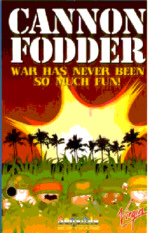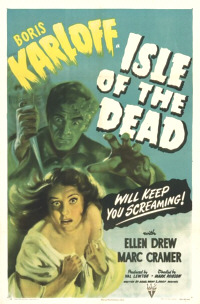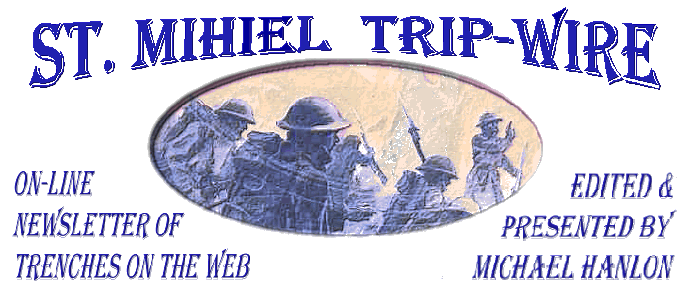
TRENCH REPORT: Thanks to all of you who have stepped up and subscribed to our new on-line magazine, Over The Top. The first issue, focusing on the Zeppelin War, is on schedule for delivery on January 15th. For those of you who would still like to sign up, just click on the icon below at the bottom of Page One. . .The Trip-Wire, however, continues as before into our fifth year of publication with all of our regular features and columnists returning for 2007. New things will be appearing, too. This month Christina Holstein begins introducing us to the Sleeping Beauties of the Western Front in her Field Memo. . .Because of the numerous chapter meetings by the Western Front Association and the Great War Society, I have to consolidate a bit and now will provide links to their News and Activities pages so you can see a full listing of all their events. . .However, I would like to put in a special word to those of you down Texas way. David Beer and the Southwest Chapter, WFA-USA has put together a terrific first-ever seminar, scheduled for March 10th. Their program is as varied and interesting as, say, a typical issue of the Trip-Wire. (link) MH
This Month's Internet Feature
Lesser-Known Naval Aspects
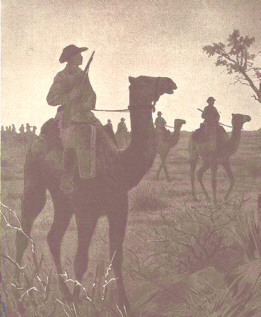
German Camel Corps SW Africa
New at the Websites of the Great War Society and Our Friends
Click on Title to Access
|
At Great War Society Sites
At the WFA-USA
|
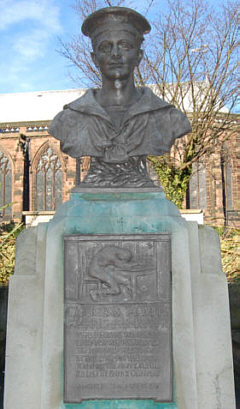
Memorial in the gardens of Saint Peter's Church Wolverhampton, U.K. It was erected by the sailors of His Imperial Italian Majesty's ship Libya in honor of Douglas Morris Harris AB of the Royal Navy. Harris's ship HMS Floandi took part in a battle with the Italian navy against the Austrians. Floandi's wireless aerials drew the fire of the Austrians, resulting in Harris's death, but allowing the Allied ships to prevail.

Atypically, the U.S. army of the Second World War had a high percentage of senior commanders who had not seen frontline service in the First World War despite being eligible. Notables included Matthew Ridgway and Lucian Truscott, who served in Texas and Arizona along the Mexican border, and "Lightning Joe" Collins, who served with troops in New York state and did not go to France until 1919. Omar Bradley trained troops in Washington state, and, of course, Dwight D. Eisenhower commanded the tank training center at Camp Colt, Gettysburg. The most common path to high command in WWII was through the Command and General Staff College at Fort Leavenworth. Thirty-three of thirty-four WWII corps commanders were graduates. The interesting exception was James Van Fleet, who commanded a machine gun battalion in WWI and spent time as the head football coach at the University of Florida in the interwar period.
|
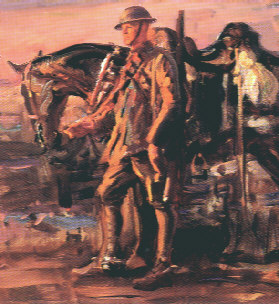
Canadian Trooper & His Horse [Detail]
Sir Alfred Munnings
GREAT WAR 2006 EVENT CALENDAR
|
90th Anniversary
Palestine Campaign
International Conference
September 3-6, 2007
Tel-Hai Academic College in Upper Galilee, Israel (email for details)
|
What We Fought
Each Other For
WFA-USA
18th National Seminar
September 7-9, 2007
Naval War College Newport, RI (Full Program)
|
Western Front Association
US Branch Chapter Meetings
Check for Your Region
Regularly Updated (details)
|
Great War Society Monthly Chapter Meetings
Berkeley, San Francisco and Palo Alto, CA
Regularly Updated (details)
|
Send additions/corrections:
Email Response
|

Memorable Event
|
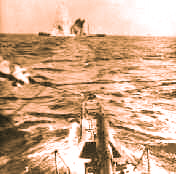
Germany Resumes Unrestricted
Submarine Warfare
January 31, 1917
Click on Image for More Information
|
|
A new U.S. oriented documentary is out from Inecom Entertainment Company: WWI - American Legacy. Narrated by David Carradine, it is an episodic treatment of the Great Adventure and has excellent sequences on such luminaries as Alan Seeger, James Reese Europe, and Joyce Kilmer. It also contains the first known WWI reference to noted What's-a-Matter U. alum and poet, Bullwinkle J. Moose.(link)
Blinded by the glow from the opening of the National WWI Museum, we neglected the opening of another important museum last month. The National Purple Heart Museum has opened at the Vails Gate, NY side of the New Windsor Cantonment State Historic Site (also known as Washington's headquarters). (link)
Notable amongst the new WWI titles:
Mark Levitch's book on the Pantheon de la Guerre, the murals at the Liberty Memorial, has now
been released by the University of Missouri Press and the National World War I
Museum. The publisher's description can be found at:
(link). Mark will be speaking on the Pantheon at Yale University on March 30, 2007.
WFA Director Dr. Gaetano (Guy) Cavallaro has just completed a three-volume history The Austro-Italian Front in the Great War (X-Libris-Random House, 2006). (email for info.).
As we go to press, Sir Martin Gilbert's new volume, The Somme: Heroism and Horror in the First World War, has just been released.

Since I have been under fire, I live through every shot again and have the wildest visions, the circular trembling aperture of the French and Belgian searchlights, like a transcendental aeroplane . . .the amazing apocalyptic sound of the giant cannon . . .a rider at full gallop in the dark . . .poor pig that I am, I can live only in dreams.
Artist Max Beckmann quoted by critic Robert Hughes in his series The Shock of the New, which is recommended for its many WWI references. Hughes's father was an Australian WWI ace.
|
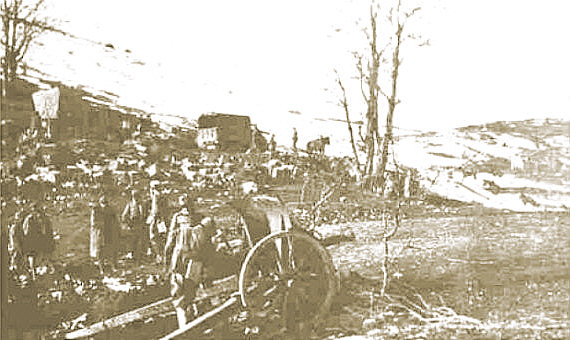
Italian 75 Battery at Col della Beretta
|
|
Subscribe to Our New On-Line Magazine
|
|
|

|
|
|
|
Page Two
|
Father Konrad Fuchs, WWI German infantryman and the world's oldest Catholic priest died on November 23rd. (link)
Russell Buchanan, 106, died in Watertown, Massachusetts in December 2006. He served in the U.S. Navy in WW1 and the army in WW2.
(link)
Moses Handy, 113, believed to be the second-oldest man in the world and the
last known black WW1 veteran in the U.S. died in December 2006 in Aberdeen,
Mississippi.
(link)
Captain Kenneth Cummins double WW Veteran, who served in the Royal Navy in the First and survived a submarine sinking in the Second, died on December 10th. (link)
|
Sleeping Beauties of
the Western Front
By Christina Holstein
Welcome to my first Sleeping Beauty! This is the name I give to the forgotten vestiges of WWI that are buried in the far corners of the battlefields where almost nobody goes. Fortunately for me, there are a lot of such places at Verdun and the neighbouring sectors of the Meuse-Argonne and the St. Mihiel Salient. At the end of WWI, the battlefield of Verdun was turned over to the French national forestry department without ever being entirely cleared. The nine destroyed villages in the centre of the battlefield were not rebuilt, and the refugees were not allowed to return. As for the neighbouring sectors, change is only slowly coming to areas that had low populations and few roads before WWI. As a result, vestiges of the war abound.

Entering the Camp
"Beauty #1" shown here is a railway pioneers’ camp close to the old station in Bois de Ville, which an extensive area of woodland to the west of the Argonne Forest between Servon-Melzicourt and Ville-sur-Tourbe. The complex, which is on private land, includes fortified pillboxes facing the original front lines before the Battle of Verdun commenced. It also includes a twin (concrete) bathhouse and is generally hidden in lush vegetation.
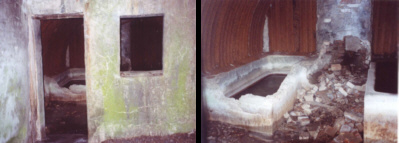
Two Interiors
These Sleeping Beauties can take many forms. Trenches or blockhouses, cook houses or fountains, cafés, saw mills, monuments, and even altars, they are largely unknown today. Festooned with creeper and covered in moss, these traces of the war are slowly crumbling away. To come across one of these old places is odd enough, but to step inside is to step back in time. Some are roughly built, and some are beautifully finished. Some have traces of painting on the walls. Some have carvings or inscriptions, particularly over the doors. One of them, apparently a café, has, on an outer wall, a whole poem in beautiful lettering. All bear witness to the care with which they were built by men whose voices can still be heard in the silence. And they have names...Mathilde, Westphalenblick, Ella, Nilpferd, Grauer Bär....
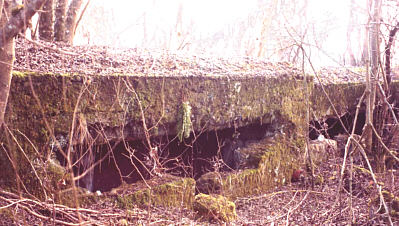
Bunker Exterior
I can see that it is impossible to preserve everything, but it doesn't seem right that such places should just be forgotten, so from time to time I will present another of these old places here. Sometimes I will explain where they are and sometimes I won't. Silent, forgotten and crumbling they may be, but some Sleeping Beauties are entitled to sleep on undisturbed.
|

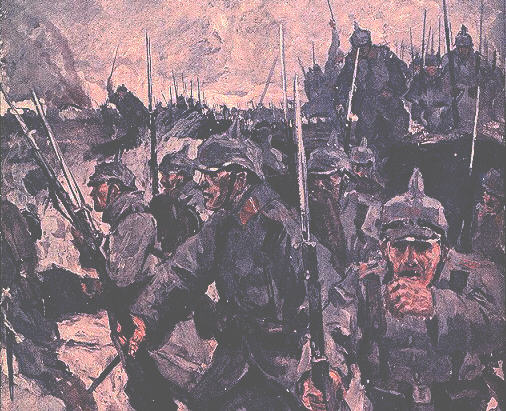
The German Army on the March Portrayed as an Irresistible Force
Click Here to Visit War in a Different Light
|

|
1917 on The Western Front
January
The Year of Hope Begins
|
The old guard had changed. General Joffre was replaced by General Nivelle as Commander in Chief in December 1916 and had been promoted to be a Marshal of France with no responsibilities. General Sir Douglas Haig was firmly in command of the expanding British Army after the 1916 Somme battles. General von Falkenhayn had been replaced as Commander of the German Forces and sent to Rumania in August 1916, being replaced by Generals Hindenburg and Ludendorff from the Eastern Front. On their arrival in France, they had been appalled by the slaughter of German troops on the Somme, following so closely on that at Verdun, and had instigated the building of the well designed and heavily fortified Hindenburg line away to the east of the Somme.
|
Map Showing Withdrawal to Hindenburg Line
This released much-needed German infantry divisions and had the added advantage of putting the new very extensive German positions on ground much more advantageous to the defenders than previously, in the light of the new policy of "defence in depth". The Hindenburg line was in some places approaching five miles of fortified positions.
And now with the spring coming and the mud of the appalling winter fading, it was time for all the armies to plan their campaigns, each with a view to ending the war to the satisfaction and acclaim of their own countries.
|
|
If you are travelling to Europe and would like to visit these fields of memory for a detailed tour, please contact experienced guides Tony Noyes or Christina Holstein at Back to the Front
|
Who Were the Four-Minute Men?
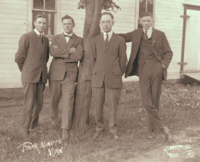
Honorable Four-Minute Men
of
Rimersburg, Pennsylvania |
During World War I, the United States fought a war of ideas with unprecedented ingenuity and organization. President Woodrow Wilson established the Committee on Public Information (CPI) to manage news and solicit widespread support for the war at home and abroad. Under the energetic direction of newspaper editor George Creel, the CPI churned out national propaganda through diverse media. Creel organized the “Four-Minute Men,” a virtual army of volunteers who gave brief speeches wherever they could get an audience—in movie theaters, churches, synagogues, and labor union, lodge, and grange halls. Creel claimed that his 75,000 amateur orators had delivered over 7.5 million speeches to more than 314 million people. CPI publications from the Four Minute Man crusade offered tips on developing and delivering a brief, effective speech—the predecessor to today’s “sound bite.” They also recognized diverse audiences, with reports of Yiddish speakers in theaters and work places, a Sioux Four-Minute Man, and a speech called “The Meaning of America” delivered in seven languages. From the History Matters Website. (link)
|
|
|
 |
Lt. Col. Paul V. McNutt
Contributed by Major General Thomas Jones
|
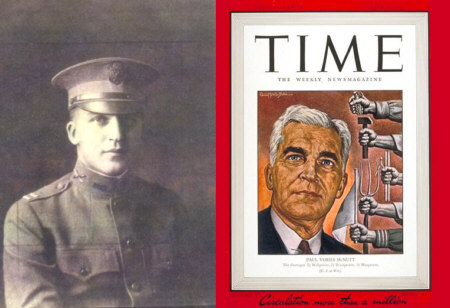
WWI Artillery Officer and Later Distinguished Public Official
Of Scots-Irish descent, Paul Vories McNutt was born in Franklin, IN, July 19, 1891, the son of John Crittenden and Ruth Neely McNutt. His father then was prosecuting attorney of Johnson County. In grade and high school he was constantly in roles of leadership. In 1909 McNutt decided to enter Indiana University. After being graduated with highest honors from the university in 1913, McNutt entered Harvard Law School, where he obtained his degree in 1916. In the spring of 1916, McNutt entered law practice at Martinsville, IN with his father, but early in 1917 he was appointed to an assistant professorship of law at Indiana University. Then came the World War. Three of the six members of the law faculty asked for leaves of absence to enter service. McNutt was one of them. Uncle Sam utilized his organizing ability and teaching experience profitably in the task of giving proper technical instruction to the men who passed through wartime cantonments. Serving at Camp Travis, San Antonio; then at Camp Stanley, an old cavalry post twenty miles from San Antonio; as an inspector in officers' training school, and later at Camp Jackson, South Carolina, where the work of training a vast host of artillery officers and men was just getting under way, McNutt reached the rank of lieutenant colonel.
After the war, McNutt was appointed professor of law at Indiana University. With him to Bloomington came his wife, the former Kathleen Timolat, whom he had married at San Antonio following a romance of army service. McNutt rose to state and national prominence rapidly after resuming his place at the university. He became known as one of the foremost advocated of an adequate national defense, and was active in American Legion affairs. In 1925 McNutt was appointed to the Ezra Ripley Thayer teaching fellowship at Harvard Law School, but before the leave of absence granted him became effective he was appointed dean of Indiana University Law School, an unusual honor at his age. At thirty-four he was the youngest dean of any accredited law school in the United States. His advocacy for strong national defense won him to office of National Commander of the American Legion.
Very active in Democratic Party politics, McNutt was elected governor of Indiana. Later his resume included service as U.S. High Commissioner to the Philippine Islands, service in the FDR administration and appointment by President Truman after the war as the first American Ambassador to the Philippine Republic.
|
|
Page Three
|
 |
Robert Burns and the
Great War
Remembering the January 25th Birthday of Scotland's Greatest Poet
|
With Scotland's sons deeply involved in the war, the memory of Robert Burns was drawn upon for recruitment and inspiration. Scots-Canadian Robert Service, who drove an ambulance on the Western Front, contributed his own poem on the occasion of Burns's birthday.
|
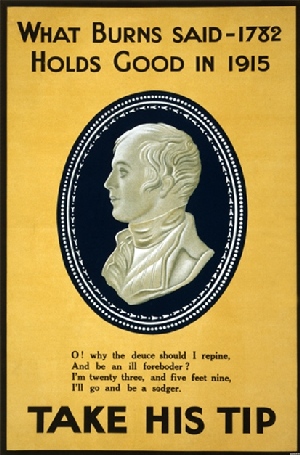
|
The Haggis Of Private McPhee
Robert Service
"Hae ye heard whit ma auld mither's postit tae me?
It fair maks me hamesick," says Private McPhee.
"And whit did she send ye?" says Private McPhun,
As he cockit his rifle and bleezed at a Hun.
"A haggis! A Haggis!" says Private McPhee;
"The brawest big haggis I ever did see.
And think! it's the morn when fond memory turns
Tae haggis and whuskey--the Birthday o' Burns.
We maun find a dram; then we'll ca' in the rest
O' the lads, and we'll hae a Burns' Nicht wi' the best."
"Be ready at sundoon," snapped Sergeant McCole;
"I want you two men for the List'nin' Patrol."
Then Private McPhee looked at Private McPhun:
"I'm thinkin', ma lad, we're confoundedly done."
Then Private McPhun looked at Private McPhee:
"I'm thinkin' auld chap, it's a' aff wi' oor spree."
But up spoke their crony, wee Wullie McNair:
"Jist lea' yer braw haggis for me tae prepare;
And as for the dram, if I search the camp roun',
We maun hae a drappie tae jist haud it doon.
Sae rin, lads, and think, though the nicht it be black,
O' the haggis that's waitin' ye when ye get back."
|
(2)
My! but it wis waesome on Naebuddy's Land,
And the deid they were rottin' on every hand.
And the rockets like corpse candles hauntit the sky,
And the winds o' destruction went shudderin' by.
There wis skelpin' o' bullets and skirlin' o' shells,
And breengin' o' bombs and a thoosand death-knells;
But cooryin' doon in a Jack Johnson hole
Little fashed the twa men o' the List'nin' Patrol.
For sweeter than honey and bricht as a gem
Wis the thocht o' the haggis that waitit for them.
Yet alas! in oor moments o' sunniest cheer
Calamity's aften maist cruelly near.
And while the twa talked o' their puddin' divine
The Boches below them were howkin' a mine.
And while the twa cracked o' the feast they would hae,
The fuse it wis burnin' and burnin' away.
Then sudden a roar like the thunner o' doom,
A hell-leap o' flame . . . then the wheesht o' the tomb.
"Haw, Jock! Are ye hurtit?" says Private McPhun.
"Ay, Geordie, they've got me; I'm fearin' I'm done.
It's ma leg; I'm jist thinkin' it's aff at the knee;
Ye'd best gang and leave me," says Private McPhee.
"Oh leave ye I wunna," says Private McPhun;
"And leave ye I canna, for though I micht run,
It's no faur I wud gang, it's no muckle I'd see:
I'm blindit, and that's whit's the maitter wi' me."
Then Private McPhee sadly shakit his heid:
"If we bide here for lang, we'll be bidin' for deid.
And yet, Geordie lad, I could gang weel content
If I'd tasted that haggis ma auld mither sent."
"That's droll," says McPhun; "ye've jist speakit
ma mind.
Oh I ken it's a terrible thing tae be blind;
And yet it's no that that embitters ma lot--
It's missin' that braw muckle haggis ye've got."
For a while they were silent; then up once again
Spoke Private McPhee, though he whussilt wi' pain:
"And why should we miss it? Between you and me
We've legs for tae run, and we've eyes for tae see.
You lend me your shanks and I'll lend you ma sicht,
And we'll baith hae a kyte-fu' o' haggis the nicht."
Oh the sky it wis dourlike and dreepin' a wee,
When Private McPhun gruppit Private McPhee.
Oh the glaur it wis fylin' and crieshin' the grun',
When Private McPhee guidit Private McPhun.
"Keep clear o' them corpses--they're maybe no deid!
Haud on! There's a big muckle crater aheid.
Look oot! There's a sap; we'll be haein' a coup.
A staur-shell! For Godsake! Doun, lad, on yer daup.
Bear aff tae yer richt. . . . Aw yer jist daein' fine:
Before the nicht's feenished on haggis we'll dine."
|
(3)
There wis death and destruction on every hand;
There wis havoc and horror on Naebuddy's Land.
And the shells bickered doun wi' a crump and a glare,
And the hameless wee bullets were dingin' the air.
Yet on they went staggerin', cooryin' doun
When the stutter and cluck o' a Maxim crept roun'.
And the legs o' McPhun they were sturdy and stoot,
And McPhee on his back kept a bonnie look-oot.
"On, on, ma brave lad! We're no faur frae the goal;
I can hear the braw sweerin' o' Sergeant McCole."
But strength has its leemit, and Private McPhun,
Wi' a sab and a curse fell his length on the grun'.
Then Private McPhee shoutit doon in his ear:
"Jist think o' the haggis! I smell it from here.
It's gushin' wi' juice, it's embaumin' the air;
It's steamin' for us, and we're--jist--aboot--there."
Then Private McPhun answers: "Dommit, auld chap!
For the sake o' that haggis I'll gang till I drap."
And he gets on his feet wi' a heave and a strain,
And onward he staggers in passion and pain.
And the flare and the glare and the fury increase,
Till you'd think they'd jist taken a' hell on a lease.
And on they go reelin' in peetifu' plight,
And someone is shoutin' away on their right;
And someone is runnin', and noo they can hear
A sound like a prayer and a sound like a cheer;
And swift through the crash and the flash and the din,
The lads o' the Hielands are bringin' them in.
"They're baith sairly woundit, but is it no droll
Hoo they rave aboot haggis?" says Sergeant McCole.
When hirplin alang comes wee Wullie McNair,
And they a' wonnert why he wis greetin' sae sair.
And he says: "I'd jist liftit it oot o' the pot,
And there it lay steamin' and savoury hot,
When sudden I dooked at the fleech o' a shell,
And it--dropped on the haggis and dinged it tae hell."
And oh but the lads were fair taken aback;
Then sudden the order wis passed tae attack,
And up from the trenches like lions they leapt,
And on through the nicht like a torrent they swept.
On, on, wi' their bayonets thirstin' before!
On, on tae the foe wi' a rush and a roar!
And wild to the welkin their battle-cry rang,
And doon on the Boches like tigers they sprang:
And there wisna a man but had death in his ee,
For he thocht o' the haggis o' Private McPhee.
A Critical Point for Haggis Chefs
Remember to puncture the sown sheep stomach before boiling or it may explode spreading suet, oatmeal and various ovine tissues around your kitchen.
|
|
|
Access to U.S. Military Records by the General Public
(including genealogists who are not next-of-kin)
Limited information from Official Military Personnel Files is releasable to the general public without the consent of the veteran or the next-of-kin. You are considered a member of the general public if you are asking about a veteran who is no relation to you, or a veteran who is a relative but you are not the next-of-kin. Next-of-kin is defined as the unremarried widow or widower, son or daughter, father or mother, brother or sister of the deceased veteran. (link) LS
|
World War I Headlines
in the
21st Century
|
|
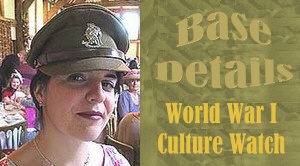 |
The War of Games
Part Two: Cannon Fodder
By Dr. Esther MacCallum-Stewart
|
"This game is not in any way endorsed by the Royal British Legion."
In the second part of my investigation into the way that computer games have portrayed the First World War, I look at a game that attempted to portray the irony of war by using icons of World War One and instead dramatically backfired into a moral panic about the lessons taught in computer war games.
War games are fundamentally about killing people. For this reason, they are often the subject of intense scrutiny by the media, not so much for their historical accuracy but for their perceived violence towards their fellow men. Most games, such as the Medal of Honor series try to offset this; the MoH series of games give historical detail (files, images, veteran testimonies) as a reward for completing levels, for example. Overall, however, the political and social consequences of fighting a war are avoided in computer games; the battle ends when the objectives are met, not when the truce is signed or war dead buried.
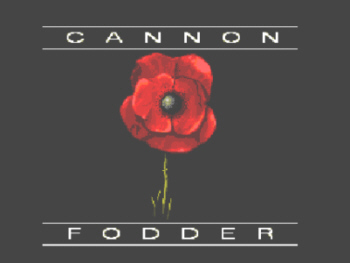
Original Cover
In 1993 Sensible Software released Cannon Fodder, launching it (probably coincidentally) at a games show in London's Olympia from November 11 to 14, across the Remembrance Sunday weekend. The object of the game was to complete a series of tactical missions using a small team of soldiers by directing them with the mouse and giving them orders.
The game was revolutionary in several ways. It was the first game to have such developed soldier units, visible to the human eye as men, and it was the first game in which, if the player clicked upon these units, the soldiers would respond with a cheery greeting or comment. The soldiers had names, too, the first being the nicknames of the programmers themselves 'Stoo', 'Jules', and so on. Overall, these men were personalised to the player, and the more missions they accomplished, the more skilled they became. Thus, on several levels it was a good idea to keep your men alive.
However, the game introduced several other ideas that did not fit as well into the idea of a computer war game. As well as their cheery greetings, the soldiers did not always die when they were hit by the enemy (or, indeed, by friendly fire). Instead, if they were seriously wounded, they would scream until either put out of their misery, or they expired on their own after a certain amount of time.
Then came the song (or series of images for Amiga players) that introduced the game:
War's never been so much fun
War's never been so much fun
Go up to your brother, kill with your gun
Leave him lying in his uniform, dying in the sun
War…
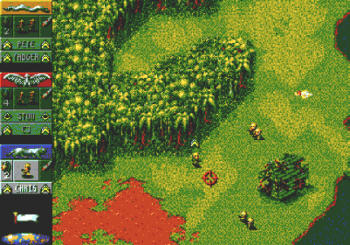
A Screenshot from Cannon Fodder
Finally, when men died, the player saw them on the 'game over' screen as a series of names and a small hillock on which lay a corresponding number of graves.
Quite simply, Cannon Fodder reminded its players what they were doing. It tried to reproduce the irony of war within a computer game framework, most notably by showing the players the consequences of their actions - death. It parodied the wargame, quite deliberately, by reminding the player that when she played, that war itself was 'fun'.
The media did not see this nuance:
'This will offend millions at a time when they remember loved ones who gave their lives in war'
(The Star)
The use of the poppy in particular was seen as a vast slur on the remembrance of the dead. Sensible Software were forced to change the cover to the game and to add the comment above that disassociated the game from the British Legion (who sell paper poppies as images of remembrance).
Here is the revised cover for Cannon Fodder - more 'cartoony' and less of an obvious historical background. Cannon Fodder probably did go too far (see for example the video that went with the release of the CD32 - below), but the sad thing is that it remains one of the only games to challenge its audience about the consequences and ideas of warfare. At the same time, Sensible Software's satire on the institution of both war and war gaming is one that still effectively conveys a vastly ironic message.
Links:
The CD32 video The original opening credit sequence for the Amiga
Dr. Esther MacCallum-Stewart is a researcher at the University of Sussex and runs our favorite First World War weblog Break of Day in the Trenches.
Click on the icon below to visit her site.

|
|
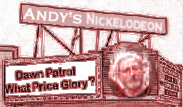 |
Isle of the Dead
By Andrew Melomet
|
The First Balkan War began in 1912 and ended in 1913. It was fought over the European territory controlled by the Ottoman Empire. Serbia, Bulgaria, Greece and Montenegro battled the Turks until all that was left of Ottoman European holdings was Constantinople.
The ever-helpful Brassey's Guide To War Films lists three movies about this bloody prelude to the Great War. In 1915 Cecil B. DeMille released The Captive, starring Blanche Sweet as Sonya the Montenegrin peasant girl who falls in love with Mahmud (House Peters) the Turkish captive in her village. Pascali's Island (1999), written and directed by James Dearden, covers the years preceding the war. It stars Ben Kingsley as Pascali, a spy for the Turks, Charles Dance as an archaeologist, and Helen Mirren as an expatriate artist.
In 1945 RKO released the Val Lewton production of Isle of the Dead, directed by Mark Robson, also set in the period. Lewton was born in Yalta in 1904. His grandfather had been a chemist who had served Tsar Alexander III, and his aunt was the actress Alla Nazimova. A successful journalist and writer, after his book The Cossack Sword was published, Lewton was hired by David Selznick to work on a proposed production of Taras Bulba. After nine years as a story editor with Selznick, Lewton went to RKO as a producer, where he created a series of remarkable black-and-white low budget horror films that were filled with psychological terror and shocks without being overtly bloody. Lewton could call upon the resources of the studio and worked with very talented collaborators many of whom would be well-known in the film noir genre: Albert S. D'Agostino (Art Director), Nicholas Musuraca (Cinematographer), Jacques Tourneur, Robert Wise, Robert Rosson and Mark Robson (Directors). His little "B" films were also very successful. The Cat People (1942) cost about $134,000 and grossed more than $3,000,000.
As a child, Lewton had been fascinated by Arnold Böcklin's gloomy painting Isle of the Dead. Production on the movie Isle of the Dead started in July 1944 but was interrupted due to Boris Karloff's back problems. It eventually was restarted in December 1944. The screenplay by Ardel Wray and Josef Mischel (rewritten by Lewton) tells how during the Balkan War a group of people are isolated on a Greek cemetery island due to an outbreak of plague. As they succumb one by one, General Pherides (Boris Karloff) begins to believe that a "vorvolaka" is at work. A "vorvolaka" is a vampire that consumes the life force of its victims. Torn between a belief in rationality and superstition, and dying of the plague, he tries to destroy the young woman he believes the evil spirit inhabits. Madness and murder take over when one of the group, Mrs. St. Aubyn (Katherine Emery), suffers a premature burial. Heavily influenced by both Poe and Freud, Isle of the Dead builds to a horrifying climax. Film critic James Agee called it "as brutally frightening and gratifying a horror movie as I can remember." According to one exhibitor, "The first part of the picture is boring, but the last part had my patrons screaming and shouting their heads off." Isle of the Dead was banned in Britain until 1956. When finally released it received an "X" certificate.
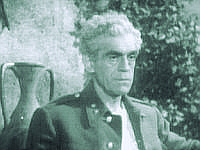
Karloff in Isle. . . |
Boris Karloff was working as an actor in 1917, playing Trampas in The Virginian. The stock company arrived in Los Angeles in December 1917. In 1918 the influenza epidemic broke out and effectively ruined the touring theatrical business in the West. Karloff worked as a day laborer before starting in movies as a bit player.
The Val Lewton Horror Collection was released on DVD in 2005. In addition to Isle of the Dead, it includes Cat People, I Walked with a Zombie, The Leopard Man, The Seventh Victim, The Ghost Ship, The Curse of the Cat People, The Body Snatcher, and Bedlam. It also includes commentaries, trailers and a documentary on Val Lewton. Isle of the Dead is also available as a double bill with Bedlam, also starring Boris Karloff. I recommend going for the complete collection.
Andrew Melomet, Proprietor of Andy's Nickelodeon will answer your Great War film or video inquiry. He is also soliciting your recommendations for the WWI Filmography he is compiling for our readers. Just click HERE.
|
|
| The following are thanked for their contributions to this issue of the Trip-Wire: Susan Neeson, Thomas Jones, Pete Guthrie, Tom Jones, Donna Cunningham, Sidney Clark, Frank Womble, Bob Ford, Fred Rutledge Tony Langley, Regina Zimmermann, Christina Holstein, Tony Noyes, Esther MacCallum-Stewart, Andy Melomet, Kimball Worcester, and Len Shurtleff. The photo of the Four-Minute Men was found at the Rimersburg Library website. Until next month, your editor, Mike Hanlon. |
SUBSCRIBE TO THE TRIP-WIRE
(Or Send it to a friend.)
(Or send us a comment on the TRIP-WIRE)
CLICK HERE TO CONTACT US VIA EMAIL |
For further information on the events of 1914-1918
and membership information visit the Directory Pages of:
|
| |
























